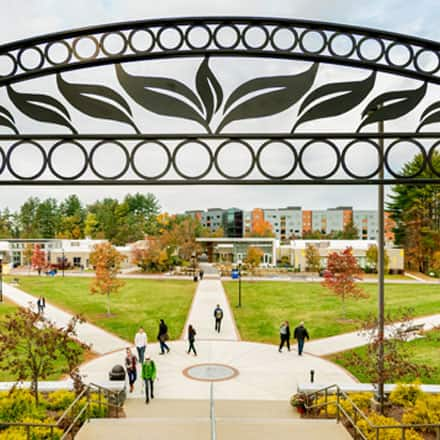HMPV: What You Need to Know
While headlines have described it as a "mystery illness," health experts have known about the HMPV for decades. The respiratory virus can be a serious health threat, particularly for children and older adults, but there is no reason to panic, according to Dr. Robin Kirschner, director of Southern New Hampshire University's (SNHU) online graduate nursing programs.
She explained what, exactly, HMPV is, its symptoms and how you can stay healthy.
What is HMPV? What should people know about this virus?
![]() HMPV, or human metapneumovirus, is a respiratory virus that primarily causes upper and lower respiratory infections. It's most common in young children, older adults and immunocompromised individuals. Symptoms are similar to those of a cold, including cough, congestion, fever and sometimes wheezing or difficulty breathing. While most cases are mild, severe illness can occur in vulnerable populations.
HMPV, or human metapneumovirus, is a respiratory virus that primarily causes upper and lower respiratory infections. It's most common in young children, older adults and immunocompromised individuals. Symptoms are similar to those of a cold, including cough, congestion, fever and sometimes wheezing or difficulty breathing. While most cases are mild, severe illness can occur in vulnerable populations.
Some headlines have been scary – how worried should we be?
While HMPV is not new and has been known since 2001, recent increases in cases have drawn attention. Most healthy individuals recover without complications. Concern should focus on protecting high-risk groups, such as infants, the elderly and those with weakened immune systems.
Is there anything particular about this virus that makes it more serious than other respiratory illnesses?
![]() HMPV can cause severe respiratory distress in vulnerable groups, similar to RSV or influenza, but it’s generally not more serious than these illnesses for most healthy individuals. Its seasonality and symptoms overlap with other respiratory viruses.
HMPV can cause severe respiratory distress in vulnerable groups, similar to RSV or influenza, but it’s generally not more serious than these illnesses for most healthy individuals. Its seasonality and symptoms overlap with other respiratory viruses.
Does this have the potential to have an impact like the COVID-19 pandemic?
HMPV does not have the same potential as COVID-19 to cause a global pandemic. It spreads less easily, is less severe in most cases and has been a known seasonal virus for decades. Existing public health measures can help manage its impact.
Is the current focus on viruses like norovirus, bird flu, RSV, and HMPV unusual or normal?
Viruses often make headlines during their peak seasons or when there’s a notable outbreak. Increased awareness may give the impression of a surge, but it’s fairly normal for respiratory viruses and other pathogens to circulate at different times throughout the year.
What should a basically healthy person do to prevent becoming ill?
To reduce the risk of illness, practice good hygiene: wash hands frequently, avoid touching your face, stay home when sick and disinfect commonly touched surfaces.
Maintaining a healthy lifestyle with adequate sleep, a balanced diet and exercise can also support your immune system.
How about people with young kids at home — is there additional advice for them?
Parents should encourage children to wash their hands regularly, cover their coughs and sneezes and avoid close contact with sick individuals. Keeping toys, pacifiers and frequently touched items clean can also help prevent the spread of viruses.
For someone who has symptoms, what should they do?
If you experience symptoms, stay home to avoid spreading illness, rest, stay hydrated and monitor your condition. Seek medical attention if symptoms worsen, particularly if there’s difficulty breathing, persistent high fever or signs of severe dehydration. High-risk individuals should consult a healthcare provider promptly.
Joe Cote is a writer and organic marketer at Southern New Hampshire University (SNHU), where he has worked since 2016. Previously he spent more than a dozen years as a reporter and editor at weekly and daily newspapers in Vermont and New Hampshire. He lives near SNHU's Manchester, New Hampshire campus with his wife and daughter. Connect with him on LinkedIn.
Explore more content like this article

SNHU Celebrates Largest Fall Commencement

Government Shutdown Update for Military Students

SNHU Celebrates the Inauguration of President Lisa Marsh Ryerson
About Southern New Hampshire University

SNHU is a nonprofit, accredited university with a mission to make high-quality education more accessible and affordable for everyone.
Founded in 1932, and online since 1995, we’ve helped countless students reach their goals with flexible, career-focused programs. Our 300-acre campus in Manchester, NH is home to over 3,000 students, and we serve over 135,000 students online. Visit our about SNHU page to learn more about our mission, accreditations, leadership team, national recognitions and awards.

